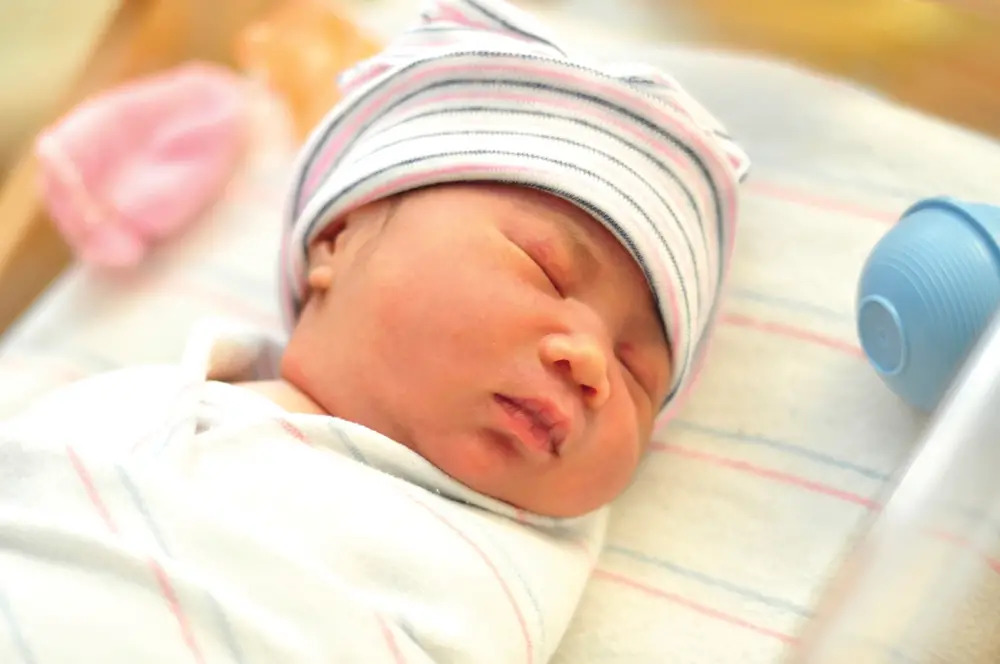There are many benefits to swaddling your baby, but incorrect swaddling can lead to serious health problems like hip dysplasia. Follow our tips to avoid these risks and get the most out of swaddling your baby.
 After years of encouraging parents to use swaddling as a way to calm infants, pediatricians are cautioning them against using incorrect methods that may do more harm than good.
After years of encouraging parents to use swaddling as a way to calm infants, pediatricians are cautioning them against using incorrect methods that may do more harm than good.
In September 2011, the American Academy of Pediatrics published a study showing that hip dysplasia, a condition that affects thousands of children and adults each year that is caused by misalignment of the hipbones, can be traced to improper swaddling techniques. The condition, also known as developmental dysplasia of the hip, hip dislocation, congenital dislocation of the hip, or loose hips, prevents the hip joint from functioning properly and wears on the joint faster than normal. Unlike a dislocated shoulder, which can be easy to spot because of the pain associated with it, those with hip dysplasia don’t experience discomfort until the later stages, when the condition is harder to correct.
“Pediatricians have known for decades that the legs are sensitive to improper swaddling,” says orthopedic surgeon Charles Price, the director of the International Hip Dysplasia Institute (IHDI) and study author. “Our issue is that we didn’t realize that swaddling is as widespread as it is. Our job is to educate parents and those who work with newborns about how to correctly swaddle children. Since swaddling became popular in the United States, pediatricians have been struggling to catch up to moms who learn how to swaddle but may not learn how to swaddle correctly.”
Like most things, there are benefits and risks to swaddling, says Harvey Karp, M.D., FAAP, creator of “The Happiest Baby” book and DVD series. “We started using car seats in the 1970s and children were killed because some car seats were not installed correctly,” Dr. Karp says. “We had a choice: either stop using them or educate people on how to use them correctly. We chose to educate people. It’s the same with swaddling.” Dr. Karp, a Queens native who graduated from the Albert Einstein College of Medicine in the Bronx, goes on to compare the results of swaddling to a doctor testing for the knee-jerk reflex. “If you’re off by an inch, you don’t get the reflex,” he explains. “If you’re not swaddling correctly, you won’t see the benefits. It’s all or nothing, and technique is critical.”
“Contemporary swaddling techniques…permit infants to be snugly wrapped with their hips being safely flexed and abducted,” says Dr. Karp. Additional free movement in the direction of hip flexion and abduction may have some benefit, according to Charles T. Price, M.D., director of the International Hip Dysplasia Institute, who approves the HALO® SleepSack® wearable blanket and SleepSack® Swaddle as “hip healthy.” ($26.95 and up)
Benefits of Swaddling
Although there are many ways to swaddle babies, the reason the technique works so well is that, by wrapping the infant’s arms tightly around his or her body, it’s possible to recreate a womb-like environment. Swaddling is the cornerstone of Dr. Karp’s “5 S’s” calming technique. “Swaddling is the first step to calming a baby,” Dr. Karp says. “Many babies struggle against swaddling and it oftentimes makes them cry more initially. Parents can lose confidence here, but it’s kind of like making a cake — if you stop at cracking the eggs, then say ‘Oh my God, this is disgusting,’ and give up, you’ll end up with a mess. But if you carry the process through to the end, and do it correctly, you’ll end up with a great result.”
With effective swaddling, Dr. Karp says, the result is a calm baby who will sleep for longer periods at a time (meaning you, too, get to sleep longer). “Crying babies and exhausted parents are a serious public health risk,” Dr. Karp says. “These two factors are a main trigger for marital stress, post-natal depression, breast feeding failure, SIDS, excessive visits to the doctor, overtreatment of babies with medication, dysfunctional bonding, maternal and paternal obesity, and even infant obesity. It turns out there are a lot of reasons for swaddling babies.”
The number one result of incorrect swaddling is that your baby will become more upset and lose sleep, but there’s also the possibility of more serious consequences. A baby swaddled too loosely may get tangled up in the loose blanket, causing overheating or even suffocation, and is more likely to roll over on his or her stomach, increasing the possibility of SIDS (sudden infant death syndrome). A baby whose hips are swaddled too tightly, on the other hand, is susceptible to developmental ailments like hip dysplasia.
All SwaddleDesigns Ultimate Receiving Blankets (pictured above in Very Berry Stripes, $25) are available in cotton flannel or a lighter marquisette weave and come with a three-step picture guide to swaddling.
Correct Swaddling Technique
Swaddling isn’t rocket science, Dr. Karp says, but there are several different ways to swaddle a baby. He recommends using a simple blanket, at least 43 inches long, and following his four-step process. To learn this process (“It’s a very specific technique that allows the blanket to be snugger and less likely to pop open,” he explains), go to www.thehappiestbaby.org and click on “Find a Happiest Baby Class.” These classes, offered throughout the NYC area and the country, are taught by trained experts in Dr. Karp’s “5 S’s” calming technique.
Some popular products make swaddling easier from the get-go, as well. The traditional square-shaped swaddle from Swaddle Designs is large enough to use effectively, the fabrics are all organic and breathable, and a mini-cheat sheet of graphic directions is sewn right onto the corner of the swaddle blanket. The Halo SleepSack product line, which is endorsed by IHDI, offers another “hip-healthy” way to swaddle and is one of the easiest to use — foolproof in terms of allowing someone with no practice to put on a baby with ease, and always allowing your baby’s hips and legs to move freely.
Discovering Potential Health Problems
Parents are usually alerted to possible problems with their children’s hips during regular checkups. During visits, pediatricians look for swayback, which causes an extreme curve in the lower back, asymmetrical creases in the buttocks, hip clicks, pain, limited range of motion in the hip, limping, or leg length discrepancy. X-rays and other tests are needed to confirm diagnosis because some hip instability is common in about one out of every 20 full-term babies, while only two to three out of every 1,000 infants require treatment, according to the IHDI.
The younger the child is when diagnosed, the better his/her chances for complete recovery using the least invasive treatment possible, says Ernest Sink, M.D., board member of the IHDIP and co-director of the Center for Hip Pain and Preservation at the Hospital for Special Surgery on the Upper East Side. “An infant may be treated in a brace like the Pavlik harness, but an adolescent or young adult may require surgery…There are better non-surgical options for the younger child, when the hip shape still has the ability to remodel.”
Treatment Options
The Pavlik harness positions a baby’s hips so they are aligned in the joint and keep the hip joint secure. Even if there’s only a problem with one hip, both hips will need to be positioned in the harness. Most children up to six months who are treated for hip dysplasia will wear this harness full-time for up to six to 12 weeks.
After babies have passed the six-month mark, they are more likely to be treated with traction, which stretches the ligaments around the hips, followed by a closed reduction surgery during which the doctor manipulates the hip joint to get the ball back into the socket. The most difficult part of this treatment can often be caring for the child, who will be placed in a spica cast after the surgery. The child will be in that cast for up to six months and need help with almost every aspect of his or her care. For toddlers striving for their independence, this can be tricky. Still, the condition must be treated.
“Developmental dysplasia of the hip is a common cause of hip osteoarthritis and pain in adolescents and young adults,” Dr. Sink notes. “Recognition and treatment in infants and children may prevent or delay this. Parents must remember that through the treatments, children are comfortable. It’s the parents who have the emotional burden of hearing the diagnosis, realizing that it needs treatment, and then acting on that.”
To learn more, including answers to frequently asked questions, diagnosis advice, and a video demonstrating how to properly swaddle your baby, visit IHDI at www.hipdysplasia.org. You can also find swaddling guidance and local classes on Dr. Harvey Karp’s “5 S’s” calming techniques at www.thehappiestbaby.org.























